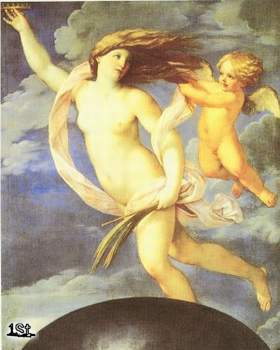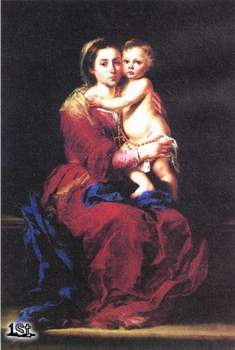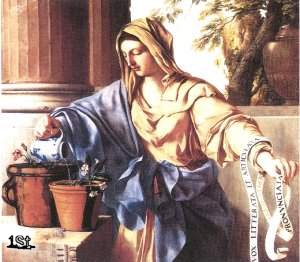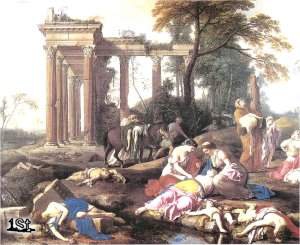"An art-historical term used both as an adjective and a noun to denote, principally, the style that originated in Rome at the beginning of the 17th century superseding Mannerism. The Council of Trent (1545-63) had strongly advocated pictorial clarity and narrative relevance in religious art and to a degree Italian artists such as Santi di Tito (1536-1603) had responded with a more simplified style which has been called 'Anti-Mannerism'. Yet it was not until the 17th century, with the groundswell of renewed confidence and spiritual militancy in the Counter-Reformation Catholic Church that a radical new style, the Baroque, developed. Rome was the most important centre of patronage at this period and the return to compositional clarity was facilitated by a renewed interest in the antique and the High Renaissance in the work of Annibale Carracci and his Bolognese followers, Domenichino, Guido Reni and Guercino. Their work is characterized by a monumentality, balance and harmony deriving directly from Raphael. Carracci's great rival, Caravaggio, by contrast modified his Classic style with an early naturalism, using for his strongly-felt religious subjects characters who appeared to have walked in straight from the streets, the spiritual meaning of the narrative heightened by dramatically theatrical chiaroscuro.
"The era known as High Baroque covered the period c1625-75 and is best represented by its leading artist, Gianlorenzo Bernini. In High Baroque all the visual arts - painting, sculpture and architecture - are forged together to make ensembles intended to exert an overwhelming emotional impact (e.g. the crossing of St. Peter's and the Cornaro Chapel, Sta. Maria della Vittoria, Rome). Reposeful balance is forsaken for dynamic movement and the integrity of individual materials is subsumed into the all-important illusionism calculated to impress upon the faithful the actuality of the spiritual experiences of the Catholic saints represented before, above and all around them. After Bernini, the greatest architect of the period was Borromini, and this was also an age when some of the greatest masterpieces of illusionistic ceiling painting were executed, the leading artists being Pietro da Cortona, Lanfranco, Baciccio and, slightly later, Andrea Pozzo. Contemporaneous with these exponents of the High Baroque, however, was a continuance of the Classical strand, characterized by the work of Algardi, Sacchi and Maratta.
"Although Baroque art had its origins in the Catholic church the possibilities for propaganda afforded by the involving and illusionistic techniques of the Baroque style were not lost on secular patrons. The Barberini family employed Cortona to proclaim their divine right to the papacy in his ceiling painting for their palace in Rome, while Colbert, chief minister to Louis XIV of France, was instrumental in the adoption of Baroque in France for the sole purpose of exalting the reign of Louis XIV. Consequently, Versailles is one of the most grandiose of Baroque palaces. Indeed, French Baroque is, by virtue of its use chiefly as political propaganda, characterized by a certain pomposity. With its codification by Lebrun, the director of the French Academy, it also moved more towards a rather ossified Classicism based on teachable rules and precepts derived largely from the paintings of Poussin who had spent almost his entire active life in Rome.
"Baroque art soon spread through the other Catholic countries of Europe. Rubens in Flanders produced religious and secular works with equal success, while in Spain religious art reached new heights of religious fervour and in South Germamy and Austria the beginning of the 18th century saw some of the most remarkably elaborate and overwhelming church architecture ever erected (e.g. Neumann and Hildebrandt). Because of its base in the Catholic Counter-Reformation, Baroque was resisted in Protestant countries such as Holland and Britain, although Rembrandt in Holland and the painter John Thornhill and architect Vanbrugh in Britain are exceptions. During the 18th century, Baroque gradually gave way to the lighter, more decorative Rococo style."








